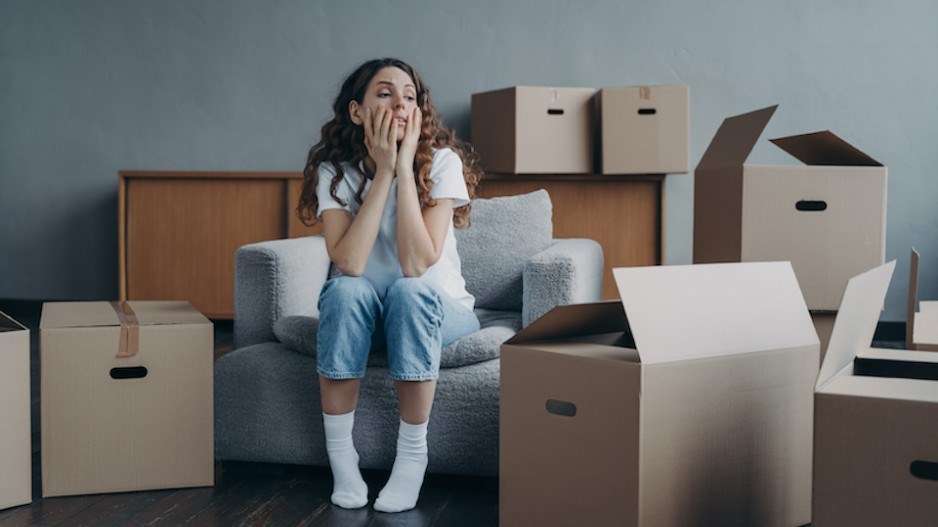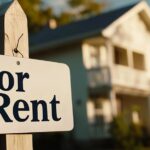It goes without saying that buying a home is not cheap. While some homeowners are capable of managing their housing costs, others are not so equally fortunate and are housing cost-burdened, or “house poor.” According to a new study from LendingTree, nearly 20 million American homeowners across the U.S. are considered house poor.
What it means to be house poor varies depending on the homeowner. However, in general, persons who spend more than 30% of their monthly income on housing costs—including their mortgage as well as additional bills such as insurance and utilities—are considered housing cost-burdened.
Measuring Cost-Burdened U.S. Households
LendingTree research found that roughly 18,381,169 (21.93%) of owner-occupied households in the U.S. are house poor. Of those that are house poor, some 44.20% are severely housing cost-burdened, meaning they spend more than 50% of their monthly incomes on housing costs.
California, Hawaii, and New York have the largest share of house poor homeowners. In these three states, 29.92%, 28.70%, and 27.12% of owner-occupied households, respectively, are housing cost-burdened. Further, over 1.6 million owner-occupied households across California, Hawaii, and New York are severely housing cost-burdened. Overall, 47.12% of low-income homeowners in these states face significant housing costs.
Homeowners are least likely to be house poor in West Virginia, Indiana and Arkansas. Respectively, 13.54%, 16.38% and 16.53% of owner-occupied households in these three states are housing cost-burdened. While these figures are relatively low compared to other states, nearly 520,000 homeowners across the three are house poor. Additionally, cost-burdened homeowners in West Virginia and Arkansas are more likely to be severely cost-burdened than house-poor homeowners in most other U.S. states.
States Where the Largest Share of Homeowners Are House Poor
- California
- Hawaii
- New York
- New Jersey
- Massachusetts
- Connecticut
- Florida
- Vermont
- New Hampshire
- Oregon

1: California — the “Golden State”
- Total number of owner-occupied households for whom cost-burdened status is known: 7,496,004
- Number of owner-occupied households that are house poor: 2,242,907
- Number of house-poor households that are severely housing cost-burdened: 1,041,113
- Share of owner-occupied households that are house poor: 29.92%
- Share of house-poor households that are severely housing cost-burdened: 46.42%
2: Hawaii — “The Aloha State”
- Total number of owner-occupied households for whom cost-burdened status is known: 306,212
- Number of owner-occupied households that are house poor: 87,898
- Number of house-poor households that are severely housing cost-burdened: 38,809
- Share of owner-occupied households that are house poor: 28.70%
- Share of house-poor households that are severely housing cost-burdened: 44.15%
3: New York — the “Empire State”
- Total number of owner-occupied households for whom cost-burdened status is known: 4,166,296
- Number of owner-occupied households that are house poor: 1,129,716
- Number of house-poor households that are severely housing cost-burdened: 550,648
- Share of owner-occupied households that are house poor: 27.12%
- Share of house-poor households that are severely housing cost-burdened: 48.74%
States Where the Smallest Share of Homeowners Are House Poor
- West Virginia
- Indiana
- Arkansas
- North Dakota
- Ohio
- Missouri
- Iowa
- Alabama
- South Dakota
- Delaware

1: West Virginia — the “Mountain State”
- Total number of owner-occupied households for whom cost-burdened status is known: 541,951
- Number of owner-occupied households that are house poor: 73,383
- Number of house-poor households that are severely housing cost-burdened: 35,956
- Share of owner-occupied households that are house poor: 13.54%
- Share of house-poor households that are severely housing cost-burdened: 49.00%
2: Indiana — the “Hoosier State”
- Total number of owner-occupied households for whom cost-burdened status is known: 1,919,261
- Number of owner-occupied households that are house poor: 314,411
- Number of house-poor households that are severely housing cost-burdened: 132,626
- Share of owner-occupied households that are house poor: 16.38%
- Share of house-poor households that are severely housing cost-burdened: 42.18%
3: Arkansas — the “Natural State”
- Total number of owner-occupied households for whom cost-burdened status is known: 798,877
- Number of owner-occupied households that are house poor: 132,060
- Number of house-poor households that are severely housing cost-burdened: 60,461
- Share of owner-occupied households that are house poor: 16.53%
- Share of house-poor households that are severely housing cost-burdened: 45.78%
Homeowners Have Leeway with Housing Cost Spending
Households that usually spend more than 30% of their monthly income on housing are considered housing cost-burdened. This is because households that spend more than this may have insufficient funds to cover other vital expenses, such as food and automobile or credit card payments.
However, spending more than 30% of one’s income on housing is not always a bad thing. Some homeowners may easily maintain financial stability while spending more money on housing than what is often recommended.
“All of this isn’t to say that homebuyers should go wild and spend tons of money on housing just because they technically can without falling behind on their bills,” said Jacob Channel, Senior Economist for LendingTree. “Instead, it’s meant to show that not every household needs to have the same budget.”
To read the full report, including more data, charts, tips, and methodology, click here.







